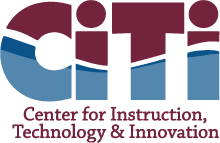Nursing Assistant
-
The Nursing Assistant program offers an introduction into the healthcare field with an emphasis on entry level employment as a nursing assistant and/or advanced careers through continued education. In this program, students will be provided instruction through classroom theory, lab and clinical skills in preparation for the New York State Nurse Aide Certification exam. Nursing assistant skills will be demonstrated and practiced on mannequins and peers in the nursing lab and at clinical rotations.
Additional Program Note: Students in this program are required to have current physical and health immunizations. Background checks may also be required. Students will participate in clinical rotations at local healthcare facilities by providing hands-on care to residents/patients.
About the program:
- Successful Student Attributes: Good personal hygiene, ability to multitask, can bend, squat and lift at least 25 pounds, can maintain confidentiality, strong communication skills, basic understanding of science concepts as related to the human body, ability to work in a fast-paced environment, genuine interest in caring for others, compassion, trustworthy and appropriate for patient interactions in healthcare facilities, positive discipline history
- Career Opportunities: Nursing Assistant, Therapy Aide, or Healthcare Advocate
- Program Length: Two years (maybe eligible for NYS CNA certification after second year)
- Industry Alignment: NYS Department of Health Nurse Assistant/Aide; NYS Education Department Health Core Curriculum; American Heart Association - First Aid, CPR, and AED - Adult, Child and Infant Standards
- Integrated Academic Coursework: Career and Financial Management (½ credit); Science (½ credit per year); Health (½ credit); English (½ credit per year)
- Graduation Pathway: 4+1 Pathway Option: Prometric - New York State Nurse Aide Competency Exam, CDOS Pathway
Opportunities through this program:
- College Credit Opportunities: DUAL CREDIT: Cayuga Community College: BIO 209 Introduction to Nutrition (3
credits); CHEM 101 Introduction to Chemistry (4 credits); Articulation Agreements: Bryant & Stratton College - Credential Opportunities: New York State Department of Health - Nurse Aide Certification; American Heart
Association - First Aid, CPR and AED (Adult, Child and Infant Certifications) - Program Achievement Opportunities: Technical Endorsement on Graduation Diploma, National Technical Honor Society
- Industry Assessments: New York State Nurse Aide Competency Exam
Supplies/Samples:
- Program Supplies, Materials, Assessments Provided: Scrubs; Shoes; American Heart Association – First Aid, CPR, AED (Adult, Child and Infant Certifications); New York State Nurse Aide Competency Exam (if eligible)
- Entry-level Occupational Reading Materials Lexile: 1260-1300, (https://ttac.gmu.edu/archive/telegram/article-1)
- 10th Grade Reading Level Sample Text: Osteoarthritis usually affects weight-bearing joints, such as the knees, hips, and joints of the spinal column. Osteoarthritis begins when the smooth cartilage on the ends of the bones becomes rough, due to normal use of the joint. The rough area then becomes inflamed, and bony deposits build up. These bony deposits rub against the cartilage, causing even more damage. This cycle repeats until the cartilage has been worn down to the point where bone is actually rubbing against bone as the joint moves. The joint becomes swollen, stiff, and very painful. A person with osteoarthritis may take medications to decrease both the pain and swelling. Heat and cold applications can also increase a person's level of comfort. Mild exercise that places the affected joints through their range of motion helps to diminish stiffness and maintain joint function. People who have very severe osteoarthritis may need surgery to replace the joint. Hips and knees are the joints most commonly replaced, but replacement of shoulder, elbow, wrists, and hand joints is also possible. (Nursing Assistants: A Humanistic Approach to Caregiving, Year 1 & 2 textbook)
- Sample Vocabulary: respiration, airway obstruction, evaluate, intake, pathogens
- Sample ELA Question: Write a script that could be used with a patient’s family members to explain the measures included in basic life support measures.
- Sample Science Question: Apply scientific principles and evidence to explain how the rate of change (physical or chemical) is affected when conditions are varied (ex. Temperature, age, weight, nutritional intake, etc.).







